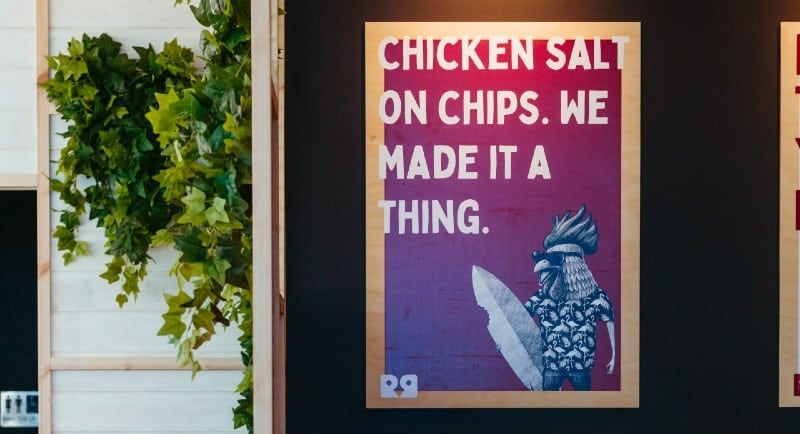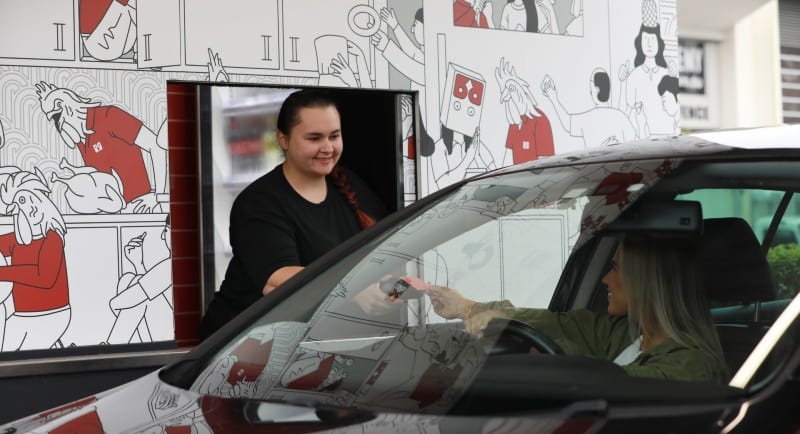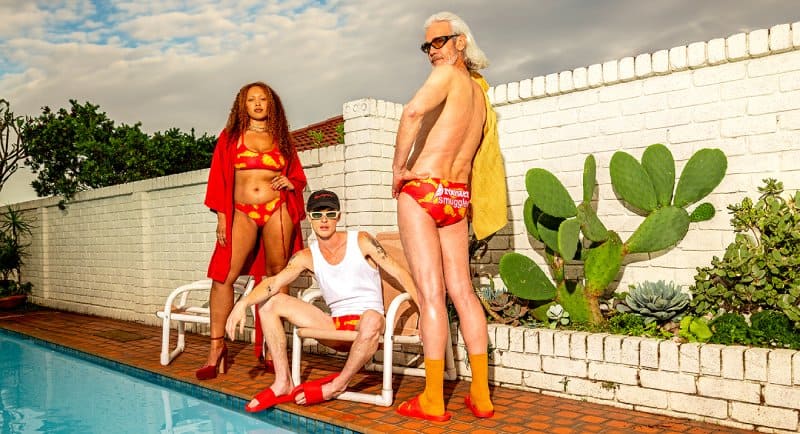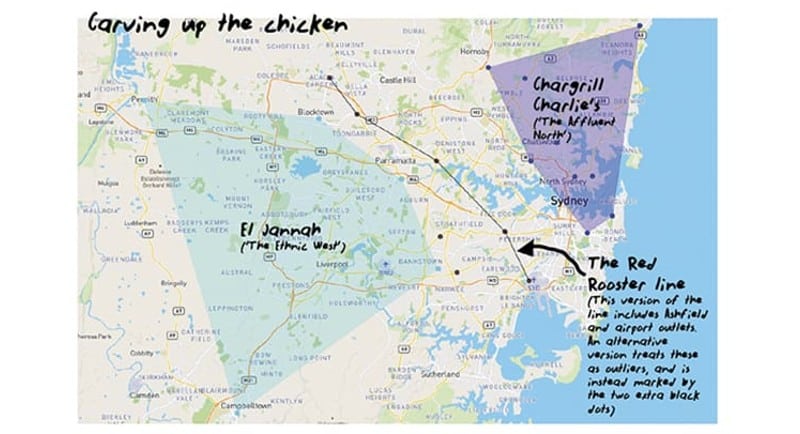Red Rooster is on a mission to double in size as the chicken chain seeks to shed its “bland and boring” brand perception by connecting to a younger, more diverse customer base.
The 50-year-old chicken brand has undergone a significant brand overhaul and is continuing to transform through menu changes, store design, and brand positioning, which has already resulted in the brand growing by 40% in same-store growth.
Ashley Hughes, director of marketing at Red Rooster – and the man leading the brand transformation told Mediaweek, the brand had lost its relevance in food culture and Australian identity.

Ashley Hughes – Director of Marketing, Red Rooster
“It had lost its way,” says Hughes, who was appointed director of marketing at Red Rooster in late 2018, following eight years at competitor KFC.
“For the vast majority of customers, we were positioned as sort of permissible, slightly better for you, but a little bit dated, a little bit bland and boring because it was just based on roast chicken. If you think who traditionally eats roast chicken, it’s the Anglo Saxons. With the changing demographic nature of Australia, we were not relevant from a food perspective.”
The brand was also failing to connect with consumers in the evolved fast-food category after brands such as Guzman y Gomez had successfully reframed the concept of fast food for Australians, forcing other brands to catch up.
Red Rooster underwent a complete brand overhaul, revamping both the brand image and product to resonate with evolving customer preferences and cultural trends in one of the toughest market segments to operate in.
Hughes said the challenges came down to three “big jobs”, “Fix the food, fix the assets and fix the experience.”
The Menu
To attract customers who might otherwise overlook Red Rooster, the menu underwent a renovation. Hughes and his team introduced new items, believing they would grant the business this opportunity to cater to modern tastes for a diverse consumership, without alienating its valued heritage customer.
Hughes joked, “On those occasions where customers are looking to take the kids out on a Friday night, or if you’re a young group of mates watching the footy and having a few beers, really, you’re not going to be ordering in a roast chook with peas and gravy.”
The introduction of Red Rooster’s characteristically crunchy fried chicken marked its first venture into the new brand proposition. Hughes felt it was a declaration; “we are fundamentally changing what this brand does, and the way that it talks to our customers.”
The foray into fried chicken was in line with the “treat, reward and indulgence” mechanism Hughes recognises as a hallmark of the fast-food category, of which Red Rooster had been lacking. The signature crunch also helped to distinguish them from primary competitor, KFC. Hughes noted, “I’d seen a lot of copying of product over the years.”
Still, the menu makeover had to be a push-pull of differentiation and asserting their presence. Hughes explained, “You think of McDonald’s, Hungry Jack’s, KFC, all of their biggest products are burgers… We knew that if we wanted to significantly grow this brand we’d need to play in the burger space.”
The “bread line” evolution has given rise to the signature Reds, Rippa, Spicy, and Barbecue Bacon burger. Hughes was also pleased to share the success of their newest addition, the Picklebird burger, which playfully leans into the ever-polarising burger pickle.
The Assets
While innovations were being introduced in its food space, the company was equally focused on reimagining its assets and refurbishing its restaurants.
Many will have observed the modern update to the Red Rooster logo by THE CREATIVE METHOD, who was responsible for revitalising the brand’s assets.


Rebranded drive-thru
However, the challenge of guiding franchisees through a renewed emphasis on customer experience and a shift from a menu of prepared frozen food to hand-brining products was no small feat.
Hughes reflected, “We fundamentally changed the way that our restaurants ran, from a people perspective and an operational perspective. It was a huge change for our franchisees.”
He stressed, “building up trust was hugely important.”
The Experience
Experience can be interpreted both as the measures taken to improve the in-store experience, but more generally, can also include the targeted marketing efforts Hughes and his team have pursued in order to shift how Red Rooster is perceived in the zeitgeist.
One of the first in this charge, on November 6, 2019, Red Rooster took over Surry Hills’ trendy Tokyo Bird restaurant for a pop-up activation in which it was disguised under the chic pseudonym “Scarlet Hen.”
“It was the start of us trying to reset perceptions of the brand, and us trying to increase our awareness of brand and culture,” Hughes mentioned, describing how it was intended to start a change in the conversation around the “bland and boring” stereotype.
In a very recent cultural collaboration, Red Rooster and iconic Australian swimwear brand, Budgy Smuggler, paired up to create the ROOSTER SMUGGLER. The playful synergy between two well-known Aussie bird brands is a nod to Australian summers filled with chicken-and-chips, and about as far from “bland or boring” as you can imagine.

Red Rooster and Budgy Smuggler’s ROOSTER SMUGGLER collaboration. Credit: Red Rooster
Of course, when it comes to cultural moments and Red Rooster, the notorious “Red Rooster Line” phenomenon, first coined in circles on Reddit and Twitter, likely tops the list for many.
The concept suggests that the line drawn between Red Rooster locations divides Sydney’s West from its more affluent, Northern suburbs.
Surprisingly, Hughes is a fan. “I love the fact that it’s a talking point about the brand,” he expressed. “I think those things allow us to punch above our weight in cultural conversations that otherwise wouldn’t be heard about the brand. It actually keeps us top of mind to a degree.”
He likened it to their TikTok videos via EIGHT CLIENTS that played up the “money laundering” myths that have also historically surrounded Red Rooster.

The “Red Rooster Line.” Source: University of Sydney’s Honi Soit
Nonetheless, Hughes assured, “We’re working towards getting across that line,” referring to a time prior to this, when the brand struggled to expand its reach in Sydney.
“If we’re going to do it, we need to make sure we’ve got the right food proposition, the right positioning for the brand, the right look and feel and the right experience.” He claimed that, “it’s more a matter of time of when than anything else.”
In fact, Hughes revealed the “big aspiration” of Red Rooster is to double their size. Despite the notoriously fierce nature of the QSR category, Hughes believes, “we’re now not fighting with one hand behind our back, we’ve actually got products that can equally compete on taste and quality.”
